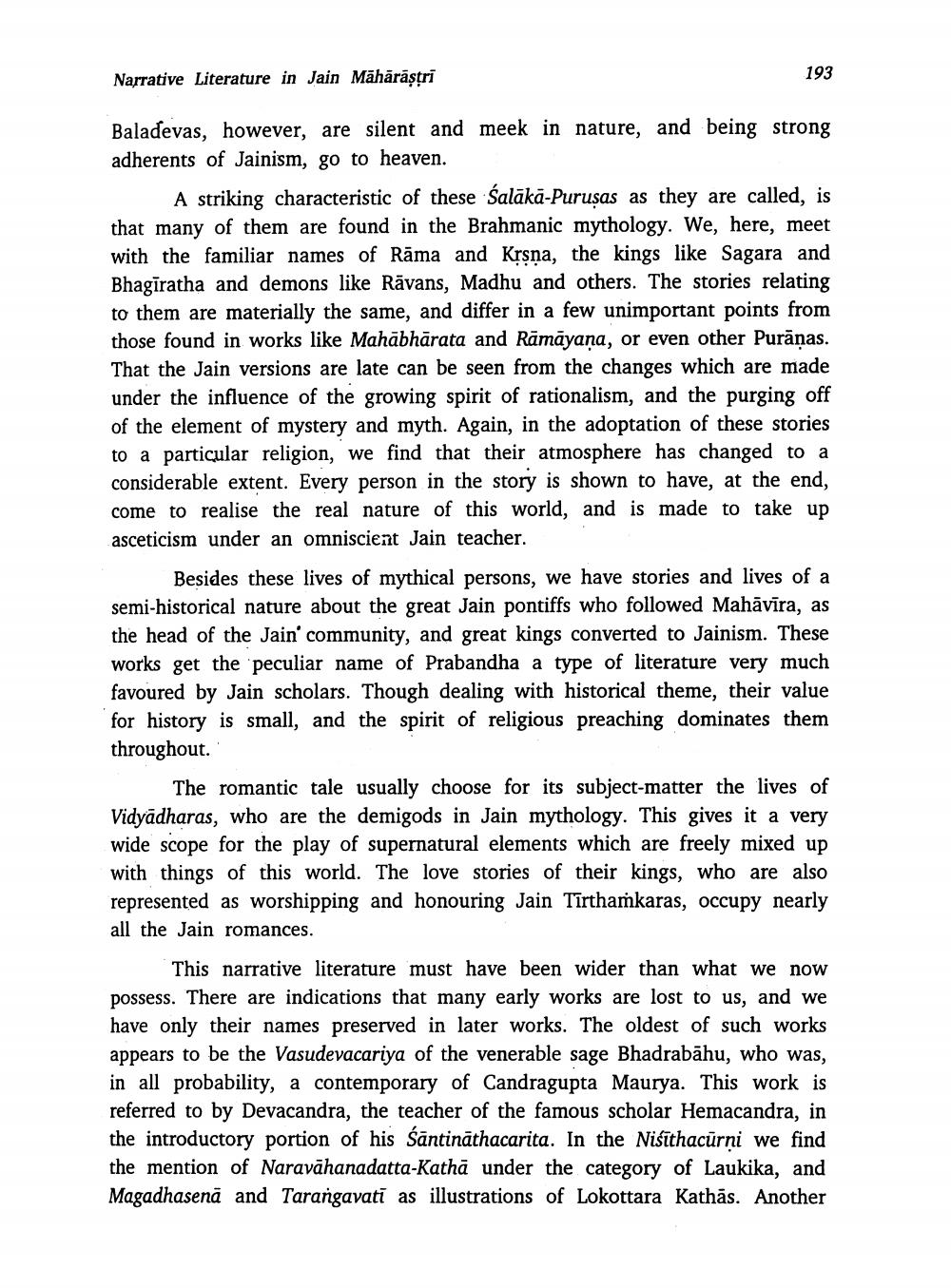________________
Narrative Literature in Jain Mähärastri
193
Baladevas, however, are silent and meek in nature, and being strong adherents of Jainism, go to heaven.
A striking characteristic of these Salākā-Purusas as they are called, is that many of them are found in the Brahmanic mythology. We, here, meet with the familiar names of Rāma and Krsna, the kings like Sagara and Bhagiratha and demons like Rāvans, Madhu and others. The stories relating to them are materially the same, and differ in a few unimportant points from those found in works like Mahābhārata and Rāmāyaṇa, or even other Purāņas. That the Jain versions are late can be seen from the changes which are made under the influence of the growing spirit of rationalism, and the purging off of the element of mystery and myth. Again, in the adoptation of these stories to a particular religion, we find that their atmosphere has changed to a considerable extent. Every person in the story is shown to have, at the end, come to realise the real nature of this world, and is made to take up asceticism under an omniscient Jain teacher.
Besides these lives of mythical persons, we have stories and lives of a semi-historical nature about the great Jain pontiffs who followed Mahāvīra, as the head of the Jain community, and great kings converted to Jainism. These works get the peculiar name of Prabandha a type of literature very much favoured by Jain scholars. Though dealing with historical theme, their value for history is small, and the spirit of religious preaching dominates them throughout.'
The romantic tale usually choose for its subject matter the lives of Vidyadharas, who are the demigods in Jain mythology. This gives it a very wide scope for the play of supernatural elements which are freely mixed up with things of this world. The love stories of their kings, who are also represented as worshipping and honouring Jain Tirthamkaras, occupy nearly all the Jain romances.
This narrative literature must have been wider than what we now possess. There are indications that many early works are lost to us, and we have only their names preserved in later works. The oldest of such works appears to be the Vasudevacariya of the venerable sage Bhadrabāhu, who was, in all probability, a contemporary of Candragupta Maurya. This work is referred to by Devacandra, the teacher of the famous scholar Hemacandra, in the introductory portion of his śāntināthacarita. In the Niśīthacūrni we find the mention of Naravāhanadatta-Kathā under the category of Laukika, and Magadhasenā and Tarangavati as illustrations of Lokottara Kathās. Another




